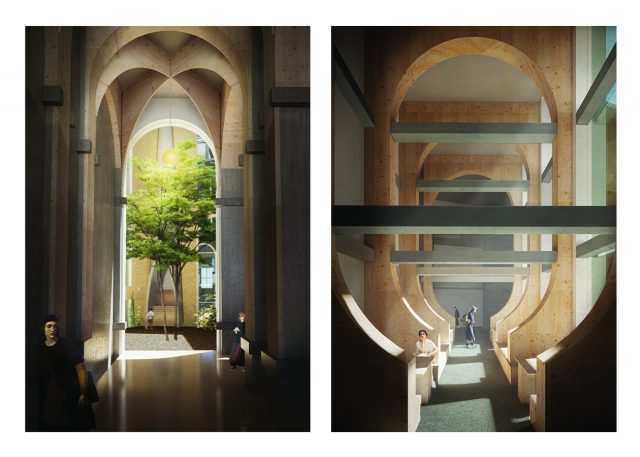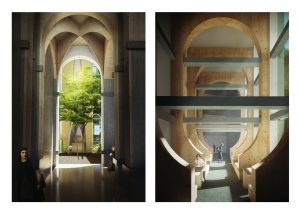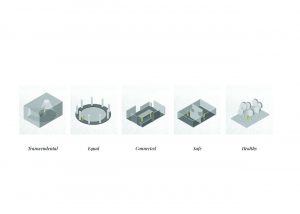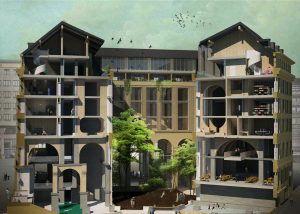Afstudeerpresentatie Ronja Dmoch
vrijdag 5 april, 14u00
Vrijdag 5 april vindt de afstudeerpresentatie plaats van Ronja Dmoch (Architectuur) met als onderwerp:
“The New Public Luxury – Transforming societal values through architecture“.
Commissie:
Voorzitter : Renske van der Stoep (ROFFAA / RAvB)
Mentor : Jolijn Valk (Urban Echoes)
Externe criticus : Mark Minkjan (RAvB)
Toegevoegde criticus : Jate Bleeker (Site Practice)
Afstudeerdatum en locatie:
Vrijdag 5 april om 14u00
Locatie: Auditorium RDM, Heijplaatstraat 23 te Rotterdam
In 2015, according to a study published in The Guardian, the richest 10% of the population were responsible for over 50% of global CO2 emissions. Luxury items and gadgets that symbolize status and wealth of one person are a now inevitably a burden on others. The economist George Monbiot proposes a solution for this issue. “While we are now living in a world that promotes private luxury and public sufficiency, we could decrease our carbon footprint and increase peoples quality of life in general by turning to private sufficiency and public luxury.” Monbiot’s proposition serves as the ideological foundation for this transformative architectural endeavour. But what would public luxury look and feel like? And can architecture even support a shift in societal values?
The location of the project is Essen. One of Germanys biggest cities an part of the Ruhrgebiet which is home to more than 150 coalmines putting Germany on the top 10 global CO2 emitter list. One of the biggest and most representative buildings of Essen is the “Handelshof”. This prestigious building has a long history and was mostly used as a luxury hotel. Moreover, this building is located right on the ever-growing socioeconomic split of Essen into the rich south, and a poor north. This existing structure, that as for now only supports private luxury, will be transformed into the New Public Luxury and will therefore represent new societal values of the city Essen.
Spatial experience holds a major role in restructuring this building. In the metamorphosis of the Handelshof, the credo “Function follows form” becomes the guiding principle. The absence of a predetermined purpose during the transformation process allowed for exploration and experimentation, emphasizing spatial quality over mere efficiency. But how do we determine what we want to define as “luxury”? Since todays definition of luxury is closely linked to exclusivity, making luxury inclusive already leads to a more fundamental and ideological approach. Through researching what luxury meant in the past and present, socially, architecturally and psychologically, I redefined what luxury will mean in this new public amenity and what kind of functions are to be included within the new public building.
“The New Public Luxury,” encapsulates a vision that aims to address both societal inequality and environmental sustainability through architectural intervention. Focused on the city of Essen, Germany, a metropolis grappling with the environmental consequences of its industrial past, this project seeks to repurpose a symbol of private luxury into a beacon of public inclusivity. The project prompts a crucial question: How can privately owned buildings, rich in potential, transition into public amenities? Through this inquiry, the project envisions a world where existing structures contribute to the collective well-being as luxury public amenities. It represents a shift in our profession and society that is already happening and hopes to give a new perspective to think about our built environment. Nothing is really set in stone. Our buildings can change and so can we.


